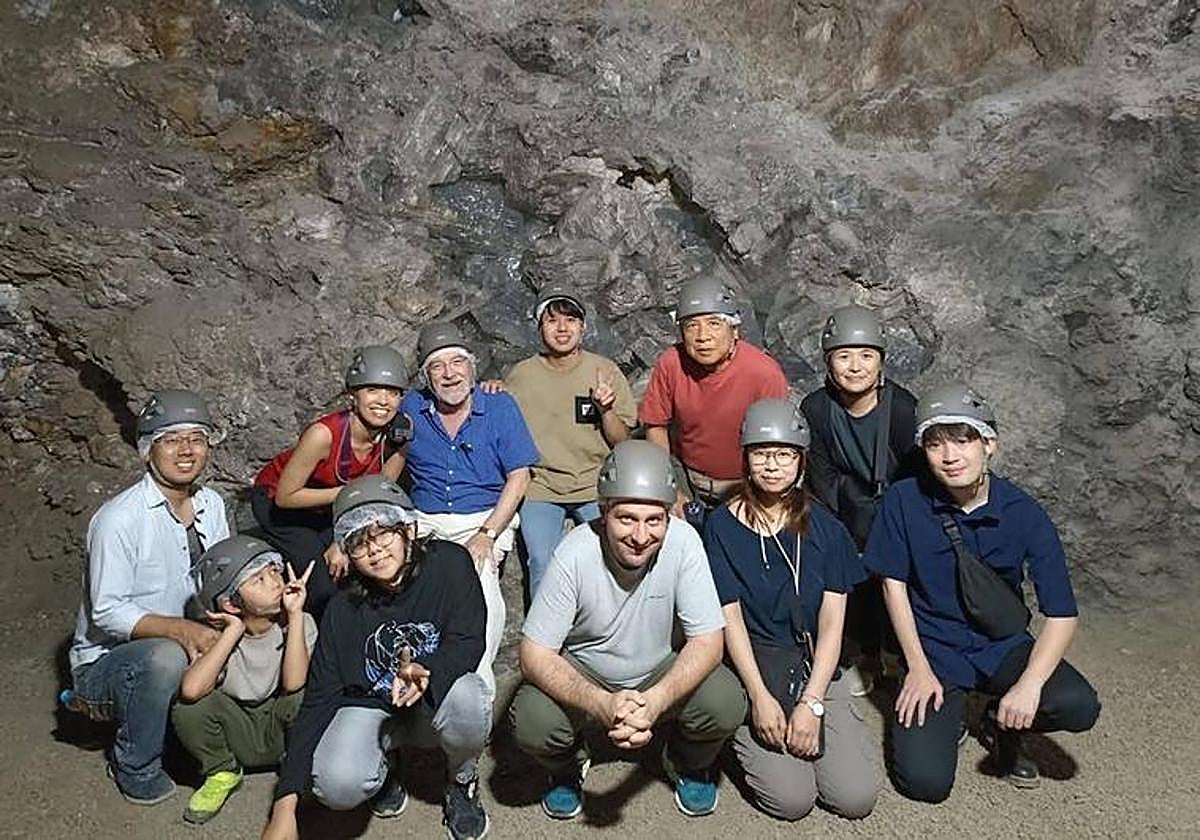Japanese crystal scientists visit the Pulpí Geode in Almeria
Leading experts in crystallography have paid a visit to this wonder of the mineral world, the globe's second largest geode
Antonio Cáceres / SUR
Pulpí
Thursday, 10 August 2023, 21:57
A delegation of Japanese scientists have visited the town of Pulpí in the province of Almeria to see the world's second largest geode.
The mayor of the municipality, Juan Pedro García, and the councillor for tourism, Juan Bautista López, welcomed the crystallography experts at Pulpí town hall, and accompanied them on their visit to the natural monument.
Led by Professor Katsuo Tsukamoto, from the Tohoku University of Sendai, and Professors Mihoko Maruyama and Hiroshi Yoshikawa from the University of Osaka, the researchers participated last week in the International Conference of Crystal Growth held in Naples.
They then asked Professor Juanma García-Ruiz, author of the book and documentary The Mystery of Giant Crystals , to organise a visit to the Mina Rica and the Pulpí Geode as part of a study trip to the University of Granada.
The Japanese scientists, who now return home with new knowledge about the wonder of the mineral world in Pulpí, also agreed to establish ties with the Spanish Japanese Society. This aims to better scientific cooperation between the two countries.
The Pulpí geode

The giant Pulpí geode, the biggest in Europe, is in the shape of a rugby ball and measures eight metres long by 1.8 wide and 1.7 high. Its crystals, which resemble knives of ice up to two metres long, are so astonishingly clear that it is possible to read a book through some of them. In the whole world, only one larger than this has been documented, and that is in the Naica Crystals Cave in the Mexican state of Chihuahua.
A geode is the result of a rare combination of accidents and the meticulous work of nature, said García-Ruiz, who knows these underground treasures very well. For one to be formed, a rock cavity fills with hot water with dissolved minerals, which then slowly cools. They have different colours and features depending on the type of materials and the conditions in which they form.
In the case of Almeria, the rock is a hollow dolomite in which a fissure appeared, through which the liquid with calcium sulphate (gypsum) of volcanic origin entered, flooding the cavity during tens or hundreds of thousands of years. It is hard to determine when it occurred, but Juanma García calculates that it was between two million and 90,000 years ago. The oscillations of temperature in the Earth's crust during millennia in the Sierra de Aguilón meant that in the interior the smallest crystals dissolved and the biggest ones grew extremely slowly.
